But with mainstream Headsets like the Oculus Rift S and HTC Vive, you can significantly improve your VR experience. And for this, you’ll need a powerful PC with a powerful GPU or Graphics card. So if you’re looking for one, we can help. But before you choose a GPU for Virtual Reality Gaming, you must consider the below factors: –
RAM Capacity
More is the RAM capacity, better is the performance. GPUs come with their RAM to handle more tasks at a time. So, if you need the best performance, you need to go for a higher RAM. Our list has 4GB,6GB, 8GB and even 11GB GPUs. So, choose accordingly.
Cooling System
GPUs tend to heat up during hardcore gaming or other heavy operations. However, a better cooling system can help you handle the heat well. So, look for compressive cooling and better fans while considering GPU.
Size & Noise
Check for the size too. The ones with three fans will occupy more space. So, check for the size to make sure it fits into your CPU box. Also, check whether or not the GPU is silent while in use. If it produces too much sound, it can disturb the overall gaming experience. So these were some important factors to consider. If you want to know more, we have a comprehensive “Buyer’s Guide” at the end. Now let’s talk about the best GPUs.
7 Best Graphics Cards for VR 2023 List
Best Graphics Cards for VR 2023 Reviews
1. Asus GeForce GTX 1660 Graphics Card
This GPU is based on Nvidia’s Turing architecture and has 1408 CUDA cores. There are dual fans in this model, which provide better cooling and quieter overall performance. With its GPU Tweak, you can easily monitor and stream in real-time. It also has Auto-extreme technology, which helps in delivering better quality. This GPU has aerospace grade alloys, which make the overall functioning faster by up to 15%. Also, this GPU can run up to 2.5 times longer than other GPUs. It has a memory speed of 1400Mhz and a 192-bit interface, which is just fine for gaming. This Graphics card is both aesthetic and a performer. Also, it is affordable as compared to the first one on our list. But you won’t find any warranty information along with this GPU. Best Features:
Auto-extreme Tech GPU Tweak 2 Dual Fan Cooling Good Boost Clock
Pros:
Powered by Nvidia Turing Architecture Compact, fast, and highly durable Dual Fan Cooling offers a silent operation
Cons:
No warranty details
2. XFX Radeon RX 580 Graphics Card
The XFX Radeon is a VR ready GPU that comes with 8GB DDR5 VRAM. This GPU comes with the new Polaris architecture, including 4th gen GCN graphics cores. It means the graphics performance with GPU is going to be enhanced. It comes with XFX double dissipation cooling tech. This system helps in the effective cooling of the entire system and improves performance. The true memory clock it comes with is 8.0GHz. However, it can be slightly overclocked to 8.1GHz. It also has AMD VR Ready premium. So, you can enjoy Virtual Reality at its best. This technology helps in delivering a latency-free experience. It also features VRM and memory cooling technology. This helps to reduce the decibels by 5%. So, you can expect a silent operation from this GPU. You need to connect with the manufacturer to register for a warranty. Features
Powered by Polaris Architecture AMD VR Ready premium Can be overclocked to 8.1GHz XFX double dissipation
Pros:
Silent operation Effective cooling because of XFX double dissipation Good design
Cons:
It has an older version of RAM
3. ZOTAC GeForce GTX 1070 Graphics Card
Here’s yet another GPU from ZOTAC which is VR ready. It has a DDR5 8GB VRAM with a memory speed of 8000MHz. It can handle most of your VR operations with ease. The device is compact and easy to install. Also, it comes with a boost clock of 1708Mhz, which is quite amazing. The ZOTAC GeForce GTX is based on the Pascal architecture. This pascal architecture supports VR and ultra-high-resolution system. It also supports 360-degree image capture even in the Virtual reality interface. Also, this GPU supports all DirectX 12 features, which provides a smooth and more powerful experience. There are copper heat pipes that effectively help pick up the heat and offer amazing cooling. Apart from performance, the GPU is well built too. The metal plates offer good protection from nay jerks or damage. So, it can be a great long-term investment in your VR gaming rig. Best Features:
Carbon ExoArmor ICE STORM Cooling Automatic Start-Stop Amazing Boost Clock
Pros:
Very durable because of the ex carbon Automatic fan turn-off, which provides a silent operation Efficient cooling system with copper pipes
Cons:
No warranty details
4. MSI GeForce GTX 1650 Graphics Card
Here’s another GPU from MSI that has 4GB DDR6 memory. This GPU supports all features of Direct X12, which can significantly improve the graphics experience. It has Dispersion fan blades. These fans are better at accelerating the airflow because of their steep nature. These fans deviate the air to the heat sink, which lies below and offers better cooling performance. Zero Frozr technology is what makes this GPU more unique. This feature helps stop the fans when you’re not using your GPU for some heavy operation. It has a cool center that supports software like Mystic light, which adds to its aesthetic beauty. It also features Turing shaders that offer an overall quieter and cooler performance. All in all, this is a good GPU for medium usage as it has 4GB VRAM. Also, there are no warranty details you can find. But you can visit the manufacturer’s site for better information. Best Features:
Zero Frozr Tech Amazing boost clock TORX Fan 3.0
Pros:
Zero Frozr technology that stops the fans for a Silent operation Good cooling system Compact design and will fit in most CPUs
Cons:
Low RAM capacity
5. GIGABYTE GeForce GTX 1060 Graphics Card
The GIGABYTE GeForce GTX comes with a DDR6 6GB VRAM. It has an amazing memory speed of 12000 MHz. It’s a compact GPU that comes with a wind force 2x cooling system. These fans spin alternately. This is done to allow better dispersion of air and hence offers effective overall cooling. Also, it reduces turbulence and offers a silent operation. This GPU also offers Nvidia Ansel that helps in taking professional-grade photographs. You can even overclock it to somehow improve the performance. This graphics card has one HDMI port and three display ports. So, you can add quite a few screens with it. Overall, this GPU is a great machine to support VR gaming. However, it is costly according to what features it offers. Also, there are no warranty details for this product. Best Features:
Alternate Spinning Fans Amazing Memory Speed Nvidia Ansel
Pros:
High Boost clock Alternate spinning fans to reduce turbulence Compact and highly durable
Cons:
Slightly pricey
6. ASUS ROG STRIX GeForce GTX 1080 TI Graphics Card
Here’s a big machine from ASUS. The Asus ROG Strix GeForce comes with the largest memory capacity on the list, which is 11GB. This GPU is also VR ready and supports 5K gaming too. And this feature is something you don’t find with every GPU. It has an amazing 1632 MHz boost clock that enhances the performance to the next level. A MaxContact plus technology keeps the GPU 2 times closer to the heatsink for better heat dissipation and effective cooling. This GPU uses aerospace-grade components, which makes it more durable than other GPU variants. It has a breathtaking resolution of 7680 x 4320. And this resolution makes the system ready for 5K gaming experience. You can attach your VR headset along with up to 4 monitors at a time. The GPU Tweak 2 offers better streaming and real-time process monitoring. All in all, this machine is just a beast and will enhance your VR gaming experience to the next level. Best Features:
Auto-extreme Tech with aerospace-grade components GPU Tweak 2 Triple Fan Design Supports 5K
Pros:
Massive RAM capacity Highly durable Can support 7680 x 4320 resolution Can support four monitors at a time
Cons:
Heavy build
7. MSI Gaming GeForce GTX 1650 Graphics Card
This budget graphics card provides a decent experience when you are using VR headsets. The graphics card uses an Nvidia chipset with a turning encoder. It comes with a 4GB GDDR6 and a 128-bit memory interference. Besides, it has a boost clock of 1620 MHz. The graphics card is heavily feature-packed with an adaptive shadowing technology, concurrent execution of operations, and a unified memory architecture. With these features, the GPU features twice the cache of its predecessor and offers 1.4x more power efficiency. The graphics card provides a quieter operation and does not overheat allowing you to have a seamless VR experience. You can easily customize the usage of this graphics card by changing the settings. Besides, you get regular updates for the driver that can be downloaded. For connectivity and video output interface, you get 3 options – DisplayPort, DVI, and HDMI. Best Features
Feature-packed 1620 MHz boost clock 1.4x power efficiency and 2x cache more than its predecessor Three video output interfaces
Pros
Decent performance Quiet operation Reduces overheating
Cons
No information on warranty
Buying Guide for the Best Graphics card for VR
Sometimes it can be quite confusing to make the right choice. It’s the reason why we’ve listed some factors in detail that you must consider. Please refer below: –
1. RAM Capacity
RAM is a crucial aspect of ‘your GPU, and so is the speed. More is the RAM storage better will the system be in multi-tasking. If your gaming needs are normal, you can go for a GPU that has 4 or 6GB of VRAM. However, if you’re a hardcore gamer, you’ll need probably 8GBs of VRAM at least. And if you’re one step ahead of hardcore, there’s an 11GB VRAM variant too. You can choose the ASUS ROG STRIX GeForce.
2. Cooling System
This is another vital feature you should look for in a GPU. Traditional cooling systems were not much effective and led to heating of the GPU. So, look for something latest like alternate spinning fans that offer better dispersion and efficient cooling. Also, look for a system where the heat sink is in touch with the GPU. This helps in a smooth and fast heat transfer, which keeps the entire system cool.
3. Size & Noise
Some GPUs have two fans, while some have 3. And this variation can determine whether or not the GPU will fit in the CPU cabinet. So, check for how much space your GPU will occupy and make sure your CPU has enough space to accommodate it. Keep an eye on alternate spinning fans for maintaining a silent operation. Alternate fans not only keep the system cool but offer a silent option too. It’s because alternate spinning reduces turbulence and offers better dispersion, eventually producing less sound. If you want a cool and silent operation, keep the noise factor in mind.
4. Warranty & Reviews
Warranty is quite important. You need to check the warranty of the GPU you want to buy at the manufacturer’s website. It’ll protect you in case something goes wrong. Also, make sure to look for a product that has good customer reviews. Customer reviews and ratings reveal how good the product is. So, make sure to go through the ratings at least once.
Conclusion
A good graphics card is essential for you to experience the best of VR. All of the GPUs in the above list are reliable and offer amazing performance. You can go through the buying guide and see if it helps. However, you can also go through the products we find best for VR: –
ASUS ROG STRIX Graphics Card: If you’re seeking an ultimate VR experience, this product can be it. It may be pricey but has the best RAM capacity. It comes with 11GB VRAM, which is enough to support those high-end VR games. Also, it features a 1632Mhz boost clock, which is another performance enhancer. XFX Radeon RX 580 Graphics Card: If you need something affordable but effective, go for this one. It comes with 8GB DDR5 VRAM, which is good enough for high-end usage. It has a true clock of 8.0GHz, which can be boosted up to 8.1 GHz. It also features an effective cooling system that maintains the GPU temperature even when you’re hardcore gaming. ZOTAC GeForce Graphics Card: This is best for people who want a compact and affordable GPU for VR gaming. It has a massive 8GB DDR5 VRAM and is based on the new Pascal architecture. This architecture makes this GPU ready for all the VR experiences you can think of. It has an amazing boos clock of 1708Mhz, which is another beautiful factor.
The only suggestion is that research properly before making any decision. Hope this article will provide you some valuable information. Comment * Name * Email * Website
Δ



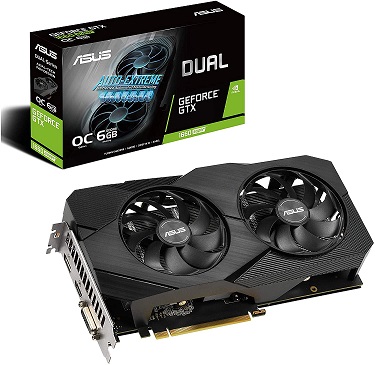
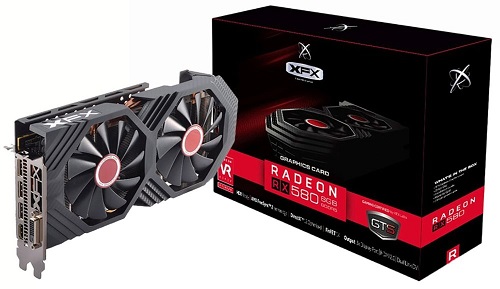
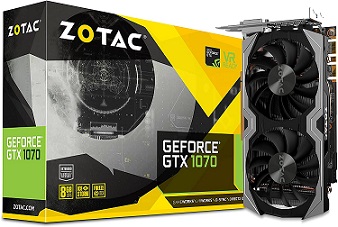
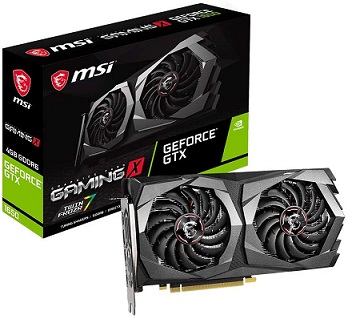

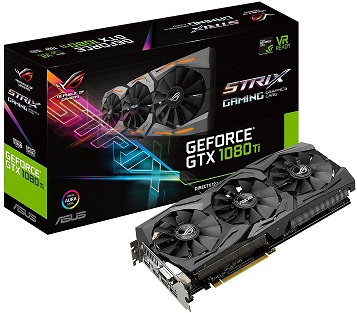



![]()